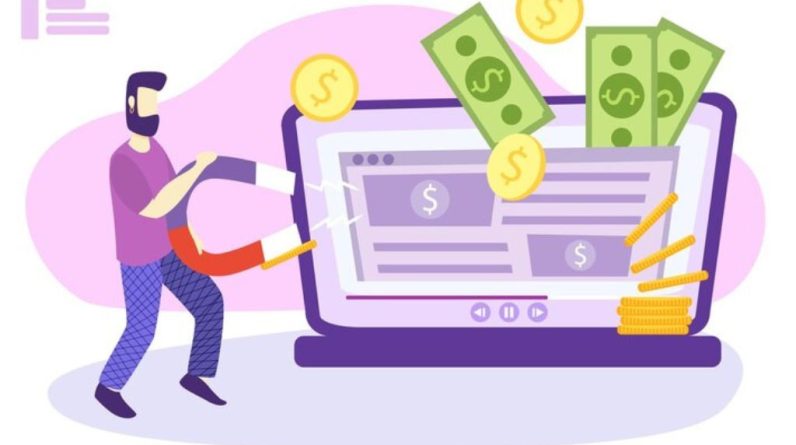
Imagine this scenario: You run a business, and everything seems to be going smoothly. Your sales are steady, and customers are happy with your products or services. However, one day you receive a notification from your payment processor stating that a customer has initiated a chargeback against a recent purchase. Suddenly, you find yourself caught in a web of chargeback fraud, a type of fraudulent activity that can cause significant financial losses and damage your reputation as a merchant.
Embed from Getty ImagesUnderstanding Chargeback Fraud
Chargeback fraud, also known as friendly fraud or payment fraud, refers to the unauthorized or fraudulent reversal of a credit card transaction initiated by the customer through their issuing bank.
Embed from Getty ImagesIt occurs when a customer disputes a charge and requests a refund from their bank rather than contacting the merchant directly. Chargeback fraud can be intentional or unintentional, but regardless of the motive, it can have detrimental effects on merchants.
Friendly Fraud vs. Chargeback Fraud
When it comes to fraudulent activities in payment transactions, it’s important to distinguish between Friendly Fraud vs. Chargeback Fraud. These two terms are often used interchangeably, but they refer to distinct types of fraudulent practices in the realm of chargebacks. Let’s explore the dissimilarities between Friendly Fraud and Chargeback Fraud to gain a clearer understanding:
Friendly Fraud
Embed from Getty ImagesFriendly Fraud vs. Chargeback Fraud encompasses different aspects of deceptive practices within the payment ecosystem. Friendly Fraud occurs when a legitimate cardholder disputes a charge made on their credit card, even though they have actually received the goods or services. This type of fraud is typically unintentional and arises from factors like forgetfulness, confusion, or failure to recognize the transaction on the credit card statement.
Chargeback Fraud
Embed from Getty ImagesChargeback Fraud, distinct from Friendly Fraud, is an intentional and malicious act committed by a customer. This form of fraud occurs when a customer receives goods or services from a merchant but initiates a chargeback with their issuing bank to obtain a refund, bypassing direct communication with the merchant. In essence, the customer exploits the chargeback process as a means of acquiring the product or service without paying for it.
How Often Do Merchants Win Chargeback Disputes?
Chargeback protection for merchants is important. However, how often do merchants win chargeback disputes? Well, Merchants’ success rates in chargeback disputes can vary depending on several factors, such as the strength of the evidence provided, the chargeback reason code, and the overall dispute management process.
Embed from Getty ImagesWhile it is challenging to provide an exact percentage, studies have shown that merchants win chargeback disputes in roughly 20-40% of cases. Therefore, it is crucial to take proactive measures to minimize the occurrence of chargebacks in the first place.
The Consequences of Chargeback Fraud
Embed from Getty ImagesChargeback fraud can have severe consequences for merchants, including financial losses, damage to reputation, and increased operational costs. In addition to the loss of revenue from the disputed transaction, merchants may also face chargeback fees imposed by their payment processors. Moreover, excessive chargebacks can result in a higher risk classification, leading to increased processing fees or even account termination.
Identifying Friendly Fraud vs. Chargeback Fraud
While chargeback fraud and friendly fraud share similarities, it is essential to differentiate between the two. Friendly fraud occurs when a legitimate cardholder disputes a charge without justifiable cause, either intentionally or unintentionally.
Embed from Getty ImagesOn the other hand, chargeback fraud involves deliberate and malicious intent on the part of the customer to receive goods or services without paying for them. Understanding these distinctions is crucial for implementing effective prevention techniques.
The Chargeback Process: Step by Step
Embed from Getty ImagesTo combat chargeback fraud effectively, it is crucial to understand the chargeback process. This includes the various stages of a chargeback, from the initial dispute to the final resolution, and helps you identify potential areas where you can take action to prevent or fight chargebacks.
How to Prevent Chargeback Fraud
Embed from Getty ImagesPrevention is key when it comes to chargeback fraud. By implementing specific strategies and best practices, you can significantly reduce the risk of chargebacks occurring in your business. This section will outline various prevention techniques including:
Chargeback Alerts and Notifications
Embed from Getty ImagesTimely information is crucial when dealing with the subject of how “How to Prevent Chargeback Fraud.” By leveraging chargeback alerts and notifications, you can receive real-time updates whenever a chargeback is filed, allowing you to take immediate action.
Chargeback Re-presentment: Fighting Back
Embed from Getty ImagesYou might be wondering, “How Often Do Merchants Win Chargeback Disputes?”. Well, the answer is Chargeback Re-presentment. This process allows merchants to dispute a chargeback and present compelling evidence to their payment processor or the issuing bank.
Tools and Technologies to Combat Chargeback Fraud
Embed from Getty ImagesThere’s no doubt in the fact that chargeback protection for merchants is as significant as ever. Therefore, various tools and technologies are available in today’s digital landscape to help merchants combat chargeback fraud effectively.
Creating a Chargeback Fraud Prevention Strategy
Embed from Getty ImagesDeveloping a comprehensive chargeback prevention strategy is vital to minimize the occurrence of chargebacks. Moreover, some of the essential components of an effective prevention strategy include monitoring transaction patterns, maintaining clear communication with customers, and implementing fraud screening measures.
Providing Excellent Customer Service
Embed from Getty ImagesDelivering exceptional customer service can significantly reduce the likelihood of chargebacks. By promptly addressing customer concerns, providing clear communication channels, and offering hassle-free return policies, you can build trust and foster positive relationships with your customers.
Collaborating with Your Payment Processor
Embed from Getty ImagesYour payment processor is a valuable ally in the fight against chargeback fraud. By collaborating closely with your payment processor, you can gain access to tools, resources, and expertise that can enhance your chargeback prevention efforts.
Conclusion
Chargeback fraud poses a substantial risk to businesses of all sizes. By familiarizing yourself with the intricacies of chargebacks, implementing proactive prevention strategies, and leveraging the right tools and technologies, you can protect your business from this costly threat. Remember, staying vigilant and proactive is the key to effectively avoiding chargeback fraud and ensuring the long-term success of your business.





